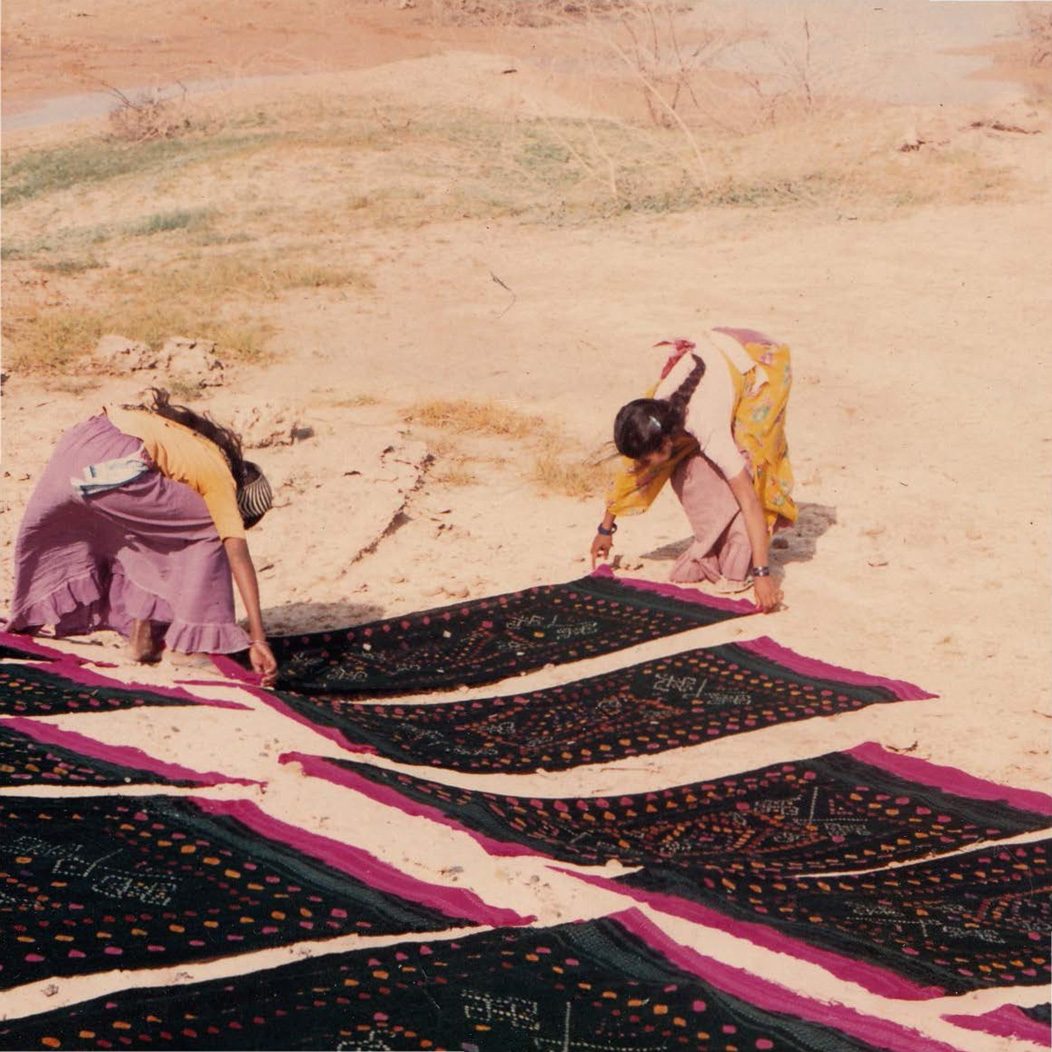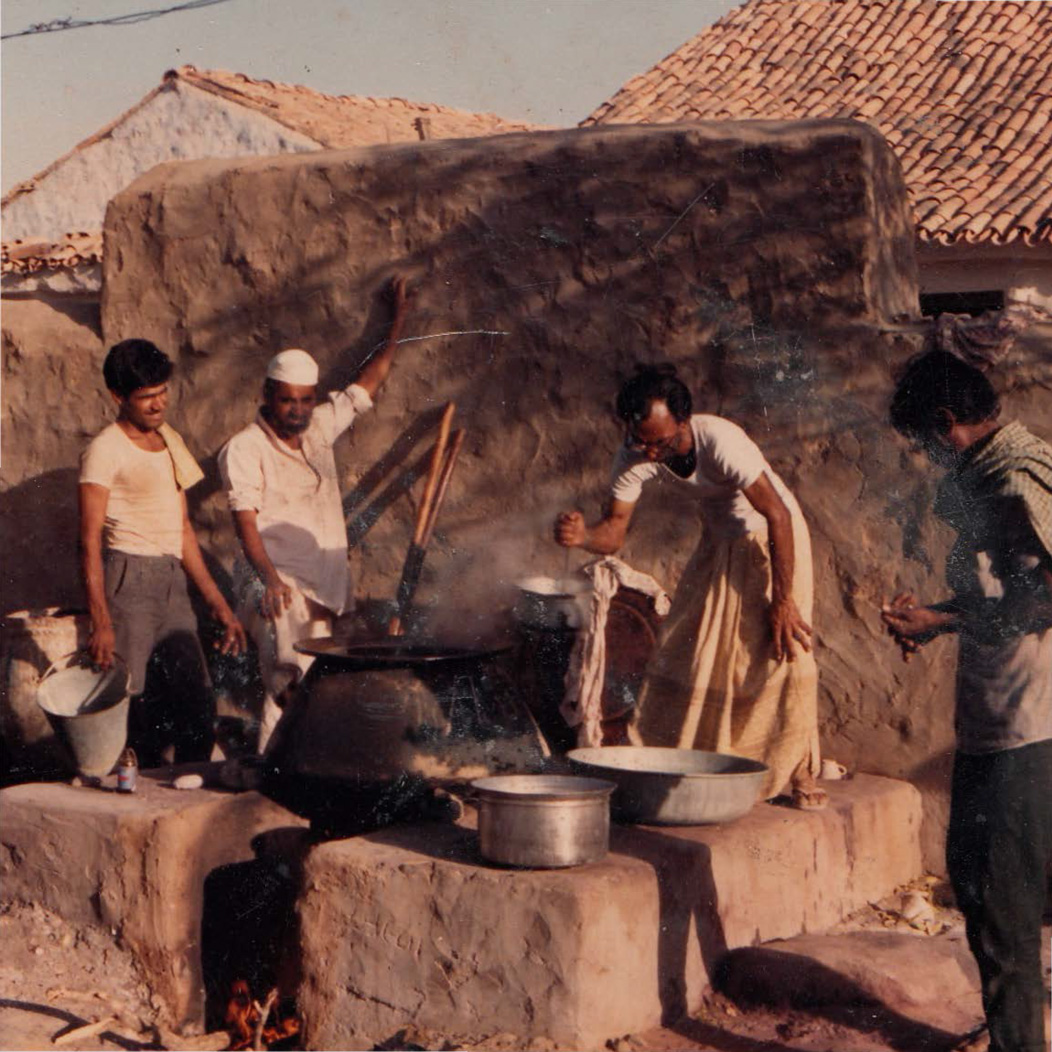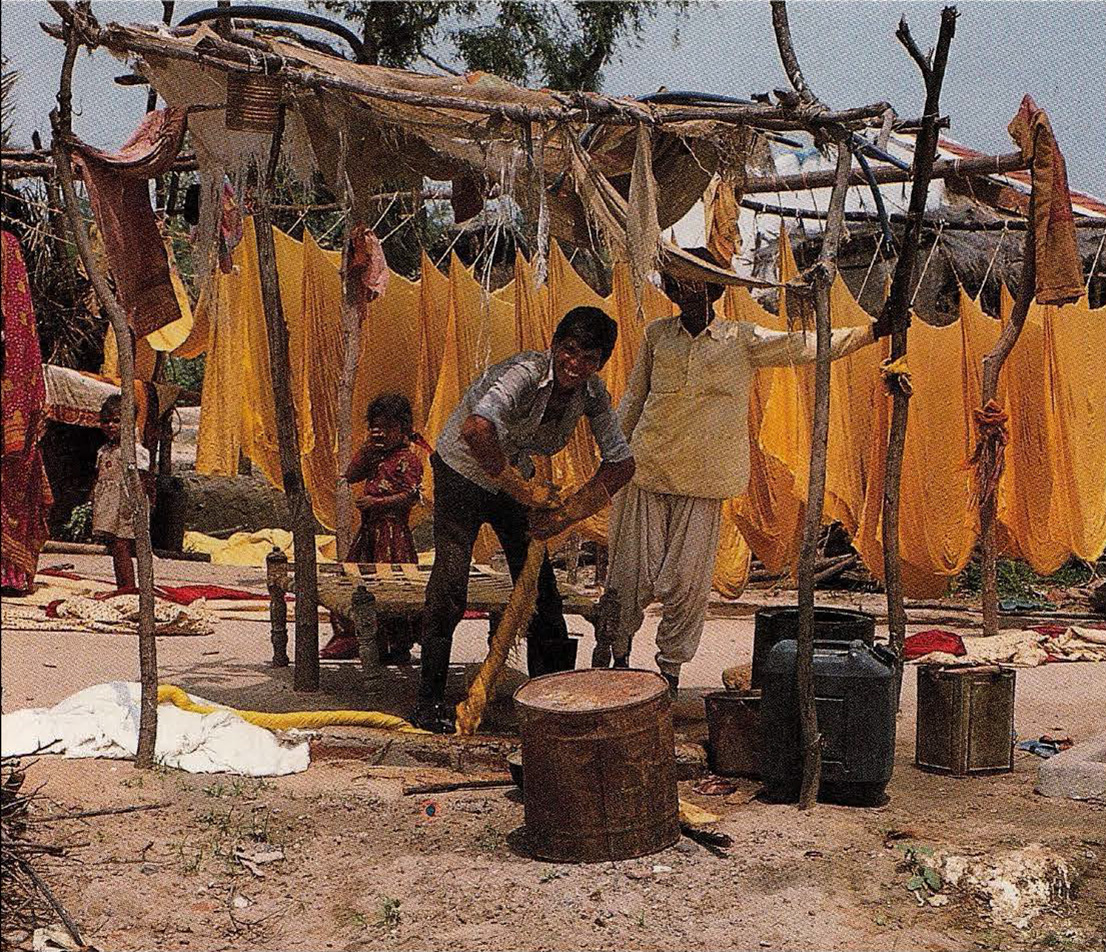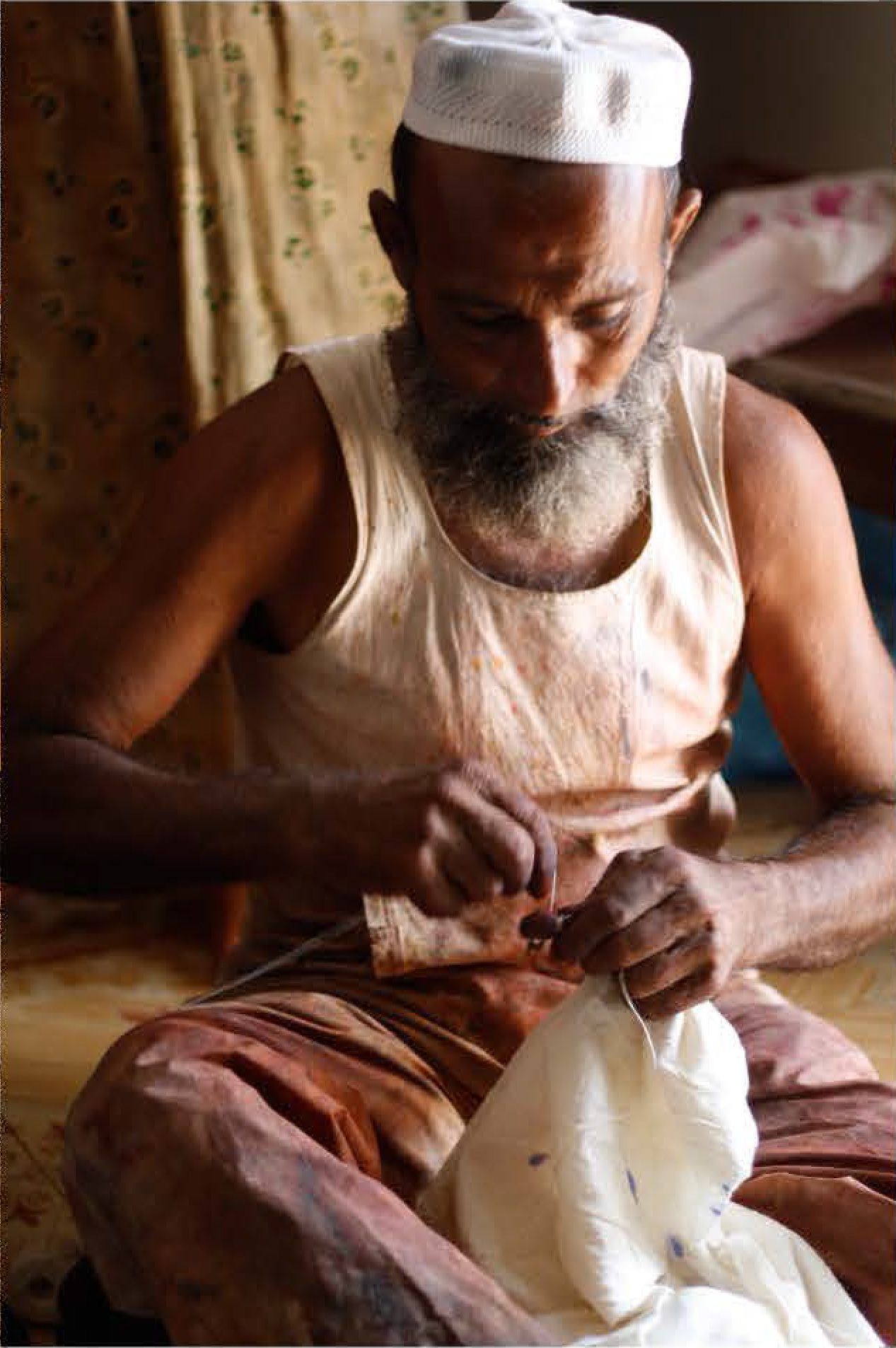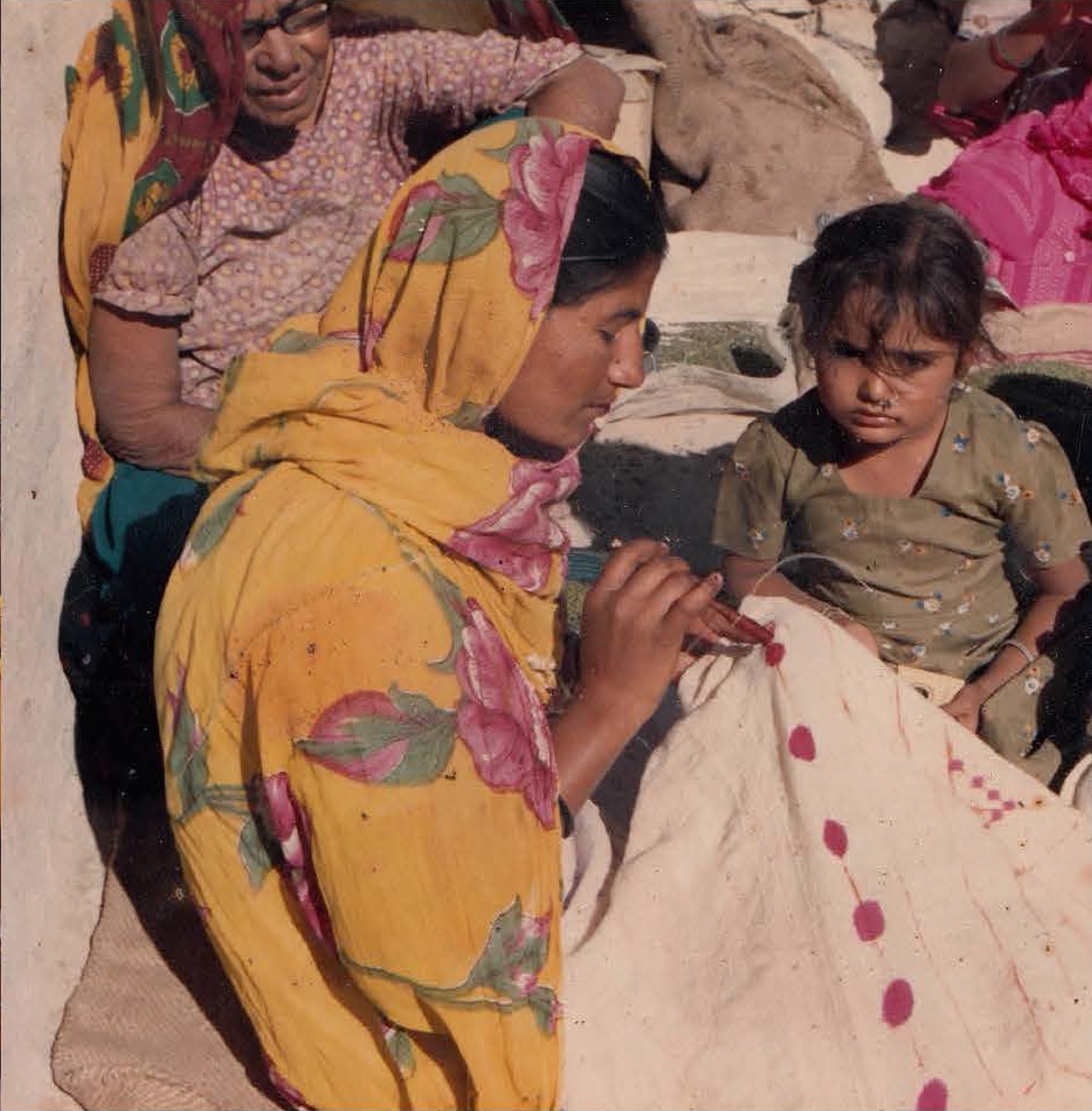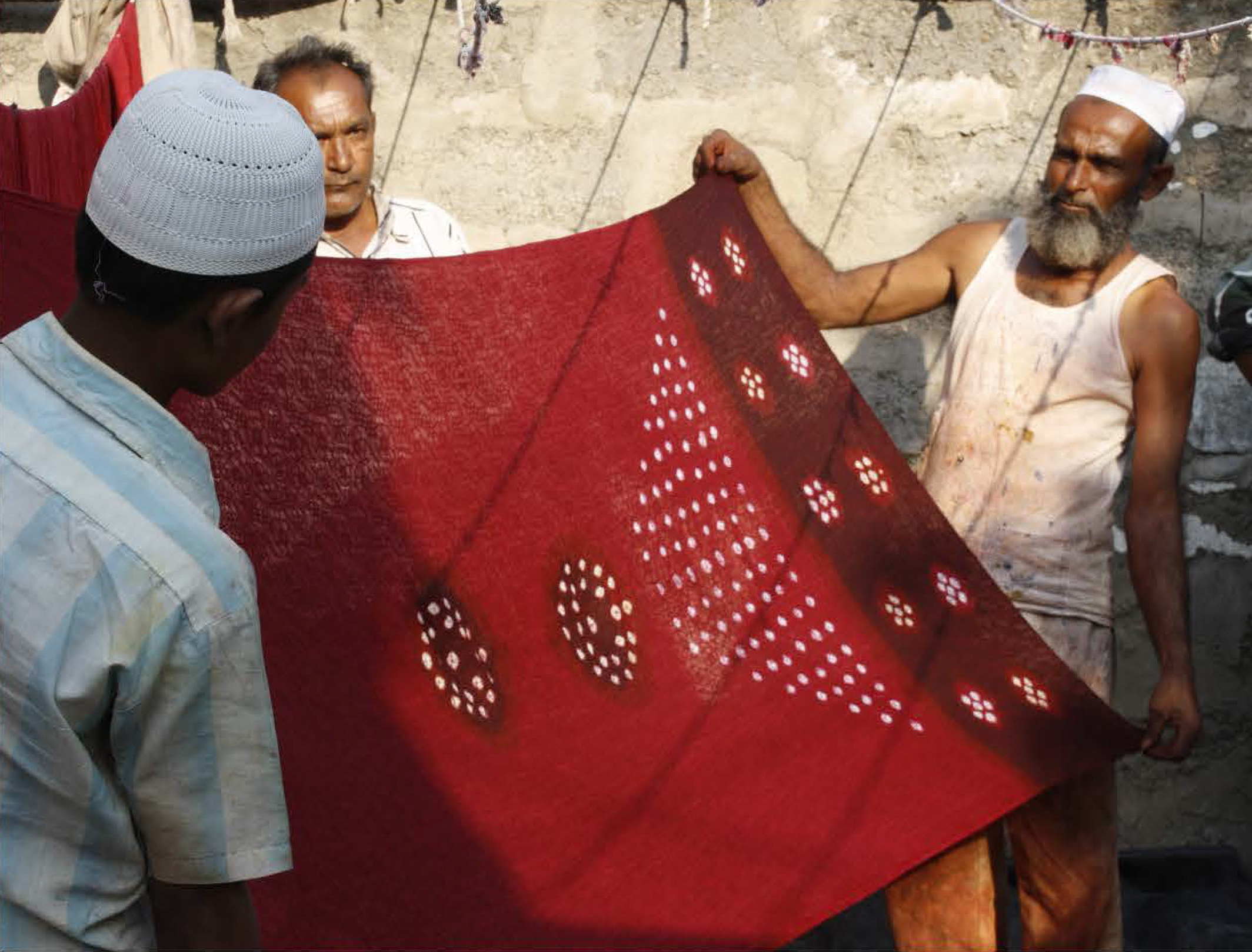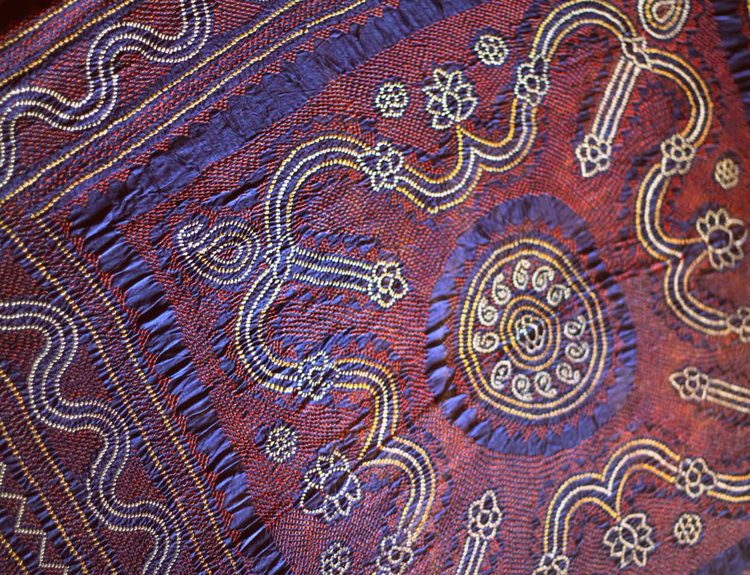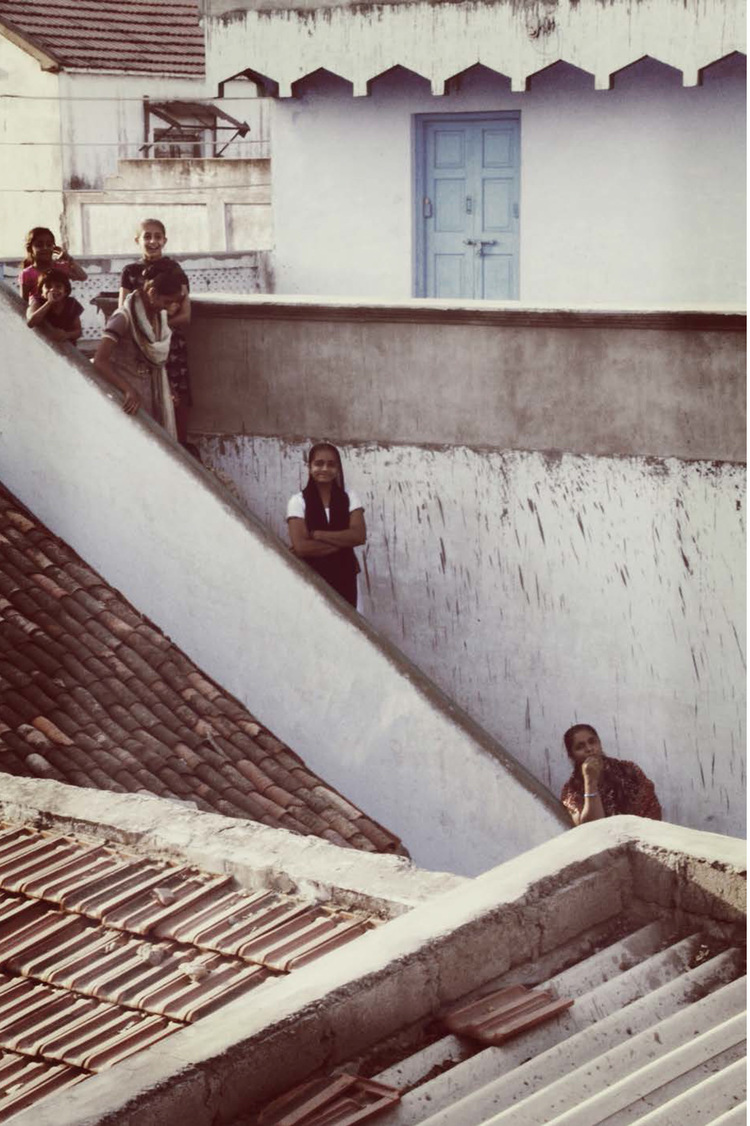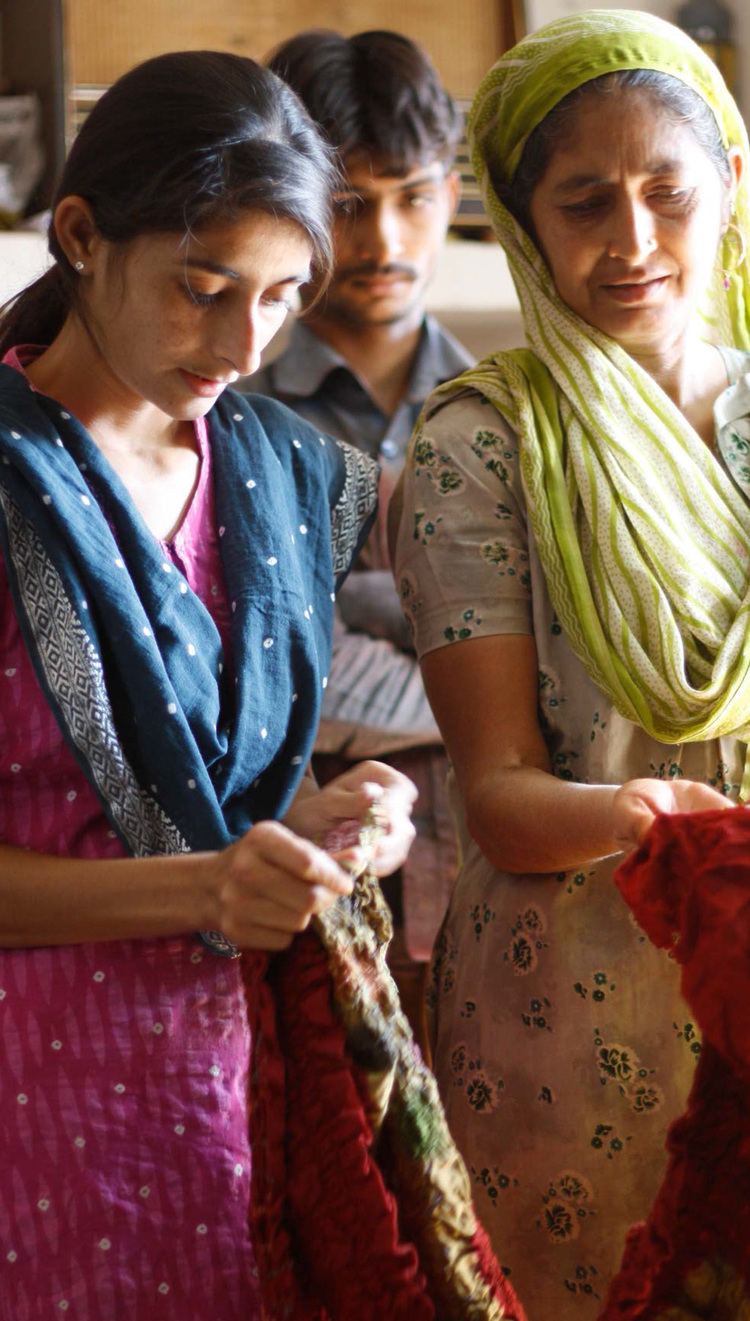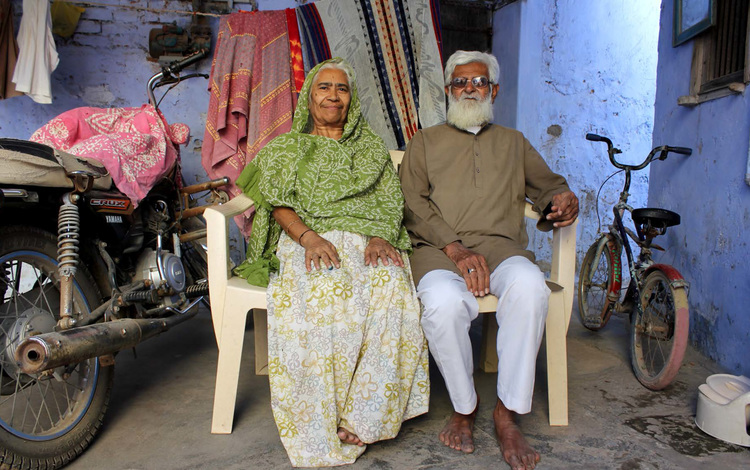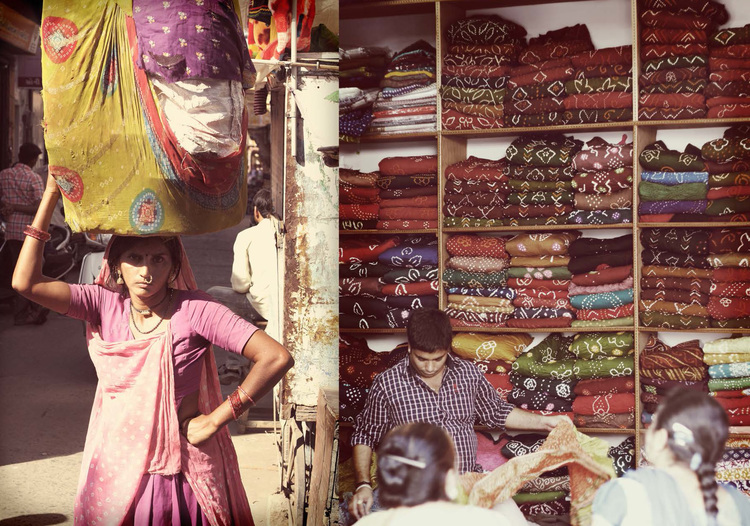
Bandhani in Kachchh
Kachchh is home to many of bandhani's most prolific artists, majority of whom belong to the Khatri community.
Women do the laborious work of tying while the men generally do the dyeing and business management. There are exceptions to both, especially as the craft has grown from a familial practice to a community-wide business with a global reach.
Earlier, bandhani was used and produced predominantly for the local communities across Kachchh: each having their distinct identity. Over time, the users of bandhani have grown as artisans encountered newer markets. Garments have evolved from odhanis (shawls) and abhas (dresses) to saris and shawls available in various materials, qualities and price ranges. The technique has mostly remained the same, but there has been a marked increase in the number of people participating in the craft. Women from communities other than Khatris are now earning incomes as tying artists, and doing so from the comfort of their homes. Many of them are proud of their work and also enjoy it.
“In every community, bandhani is considered auspicious. In many cases, even the roomal they use is bandhani. When a woman receives blessings for her marriage, she uses a roomal decorated with bandhani. It is a tradition that still continues today. ”
-
Sakina Alimohamed Isha, Bhuj
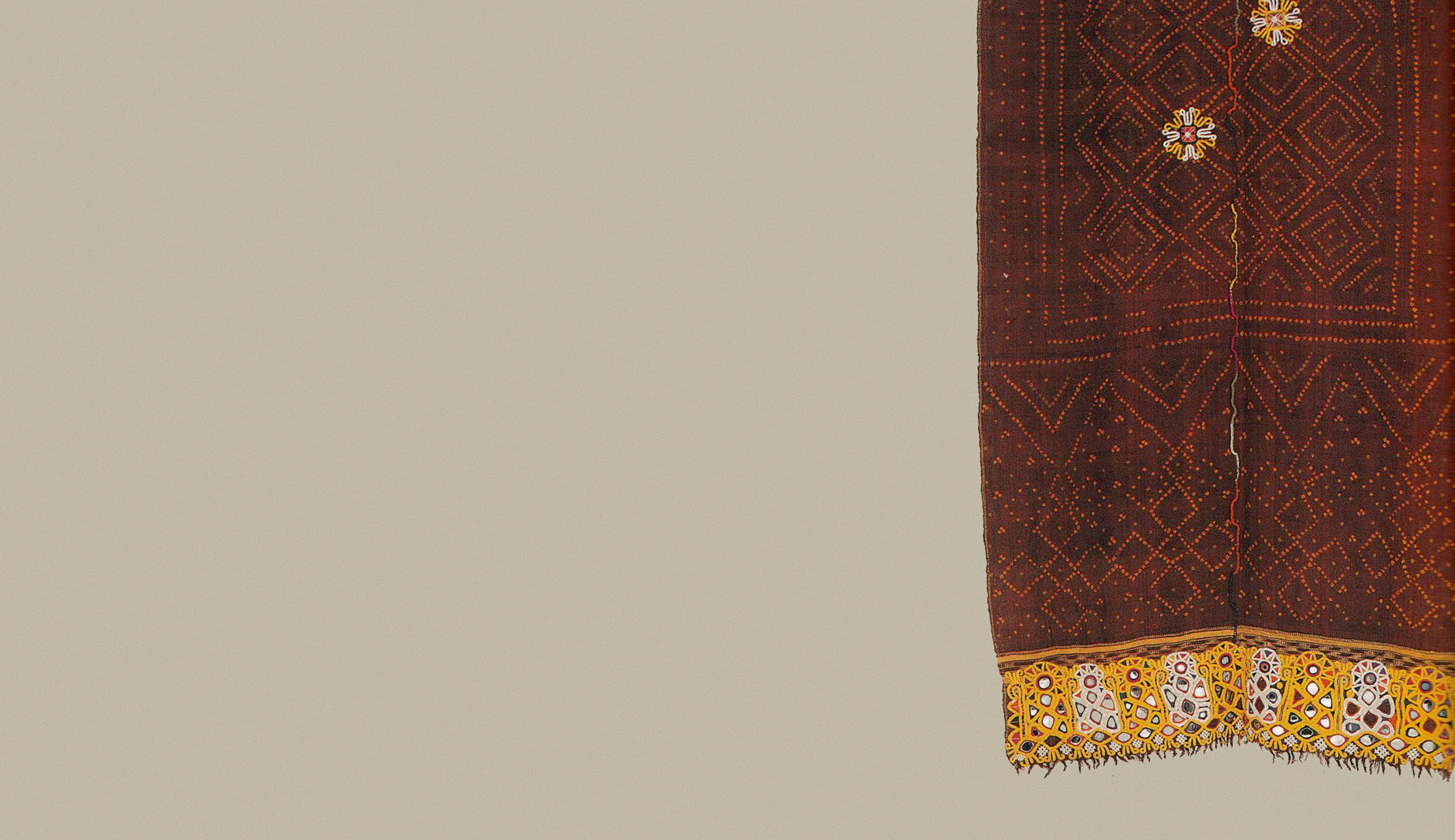
Who are the Khatris?
The word Khatri is derived from the term Kshatri, as the Khatri community is believed to have originated from Brahma Kshatris, many of whom settled in Gujarat, Rajasthan, Punjab and other parts of India.
Many generations ago, some of the Brahma Kshatris converted to Islam, and there are several stories linked to this. One is of a man who settled in Mundra and had a fear of being cremated after death. He had been staying at an Ismaili Khoja's house, and chose to embrace Islam.
According to the Khatri Itihaas, it is said that the King of Kutch, Khengarji I (1548-1585) established the regions of Rapar, Mandvi, Bhuj and Anjar, and invited communities from the Sindh to settle there in order to boost business, trade and industries. People from both religions (Hindu and Muslim) are said to have answered his call, many of whom worked in bandhani. During the time of nobility, many of Kachchh's bandhani artisans were employed by the king, and have continued to make bandhani for the wealthier classes as well as for their own use. The people that later moved away to Jamnagar, Rajkot and Jaipur became known as Halai Khatris.
Traditionally, Khatris have been weavers, dyers and printers, while the women have always been involved with the tying of bandhani. All Khatri women are taught the art of tying before they are married, as it is a matter of community pride and tradition. The Khatri artisan’s businesses have all changed over time due to changes in the availability and cost of raw materials, market preferences, and also advances in technology. The Khatris have adapted accordingly, and thanks to a combination of their hard work, government and NGO assistance, many have received exposure through exhibitions and have even entered international export markets.
Along with bandhani, Khatris practice ajrakh (block printing), discharge printing and batik are all resist techniques still practiced in Kachchh.


